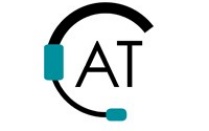Full citation
MacPherson, A. (2002). The Contribution of Academic-Industry Interaction to Product Innovation: The Case of New York State's Medical Devices Sector. Papers in Regional Science, 81(1), 121.
Format: Peer-reviewed article
Type: Research — Non-experimental
Experience level of reader: Fundamental
Annotation: Study examines the role of academic-industry linkages in the innovation performance of medical device manufacturers.
Setting(s) to which the reported activities/findings are relevant: Government, Large business, Small business (less than 500 employees), University
Knowledge user(s) to whom the piece of literature may be relevant: Manufacturers, Researchers
Knowledge user level addressed by the literature: Sector
This article uses the Commercial Devices and Services version of the NtK Model
Primary Findings
Method: Companies involved in NPD partnerships with universities share three traits: 1) Internal R&D facilities; 2) Collaborate with other firms in their industry; 3) Investment of time in the academic interactions. They also correlate positively with high patent counts and geographic proximity to university resources.
Pilot survey of 63 manufacturers.
Occurrence of finding within the model: Stage 2, Stage 3, Stage 4
Secondary Findings
Method: Companies involved in NPD partnerships with universities share three traits: 1) Internal R&D facilities; 2) Collaborate with other firms in their industry; 3) Investment of time in the academic interactions. They also correlate positively with high patent counts and geographic proximity to university resources.
Pilot survey of 63 manufacturers.
Occurrence of finding within the model: Stage 2, Stage 3, Stage 4
Tip: Academic knowledge spillovers can be defined as formal or informal movements of new science-based ideas, concepts or technical procedures from university research units to the private sector. (Jaffe [1989])
Occurrence of finding within the model: Stage 2, Stage 3, Stage 4
